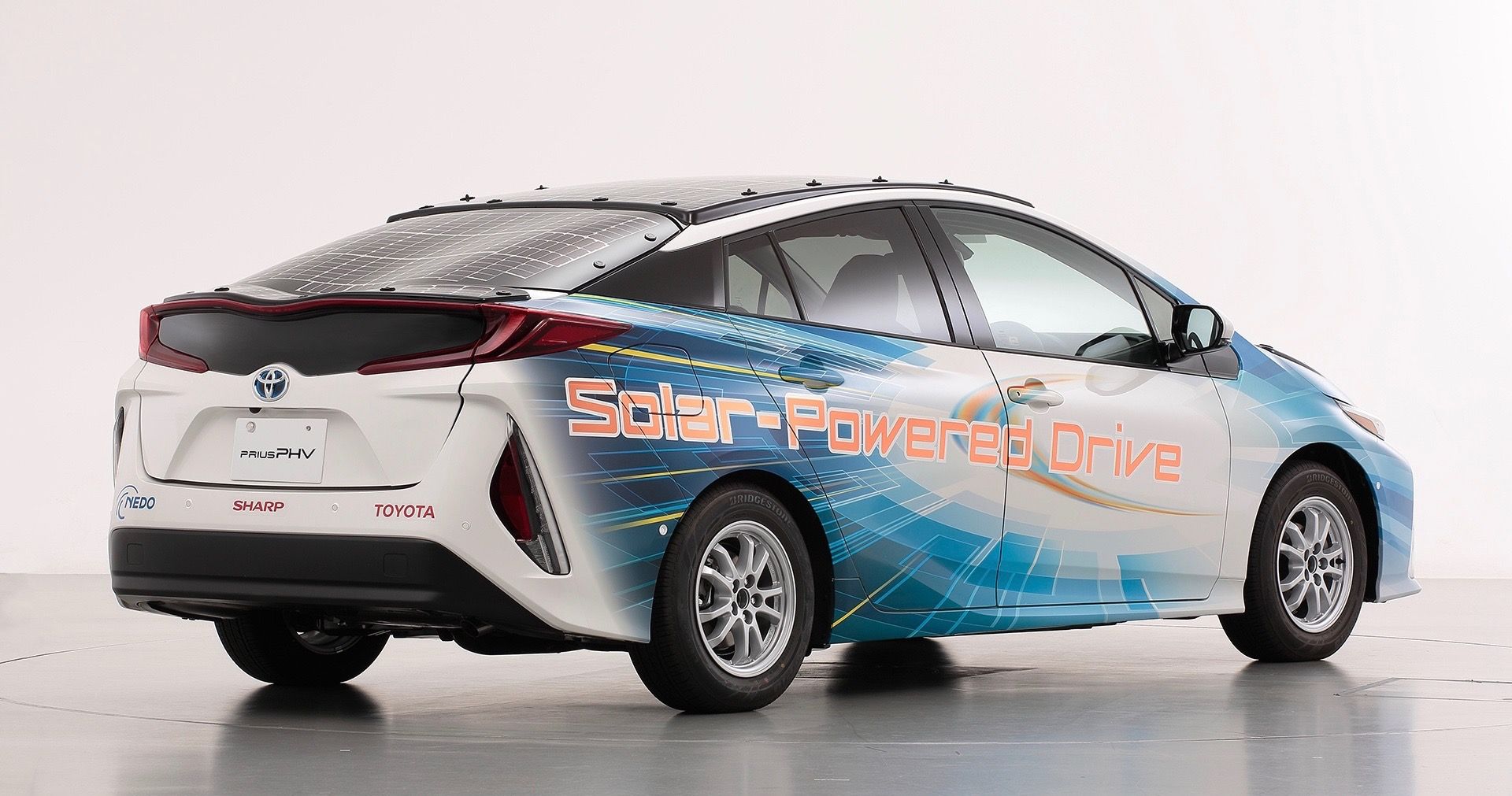Toyota Motor Corp., Sharp Corp. and New Energy and Industrial Technology Development Organization of Japan, or NEDO, have joined forces to develop a Prius that combines solar panels, highly efficient batteries and next-generation technology. Their goal is to build a car that can run forever.
“The solar car’s advantage is that — while it can’t drive for a long range — it’s really independent of charging facilities,” said Koji Makino, a project manager at Toyota.
As of now, all-electric cars need to be plugged in, which means they require a network of charging stations across the world. A solar-powered car, combined with enough battery power for a car to run at night, could overtake all new-energy technologies, from plug-in hybrids to hydrogen fuel-cell vehicles, in terms of efficiency.
The reality of solar-powered cars, however, is still in the planning stages. “This is not a technology we are going to see widely used in the next decades,” said Takeshi Miyao, an auto analyst at consultancy Carnorama. “It’s going to take a long time.”
Toyota and Hyundai Motor Co. have previously introduced vehicles with solar panels on the roof, but the results were underwhelming. A Prius plug-in hybrid sold for over 3 million yen has solar panels as an option, but they only charge the battery when the car is parked. Meanwhile, the maximum amount of power for driving only lasts about 4 miles, said Mitsuhiro Yamazaki, director at the solar energy systems division of NEDO.
Since July, Toyota has been testing a new solar-powered Prius, but it recognizes that a vehicle that can operate nonstop without connecting to a charger is still far off. This has not impeded research though.
Sharp has made some breakthroughs with a solar panel prototype that converts sunlight at an efficiency level of more than 34%, compared with about 20% for current panels. The solar cell being used by Toyota, Sharp and NEDO is about 0.03 mm thick, therefore, it can be added to a variety of surfaces, including curved parts of the roof, hood and hatchback, allowing the electrical system to charge the car even when it’s running.
If the car is driven four days a week for a maximum of 50 kilometers a day, it is not necessary to plug it into an outlet, NEDO’s Yamazaki said.
NEDO began the current project in 2016 hoping to achieve an output of 1 kilowatt in cars by using a solar-battery module with a conversion efficiency of more than 30%. Sharp, one of Japan’s largest solar panel manufacturers, is working on solar-cell technology with NEDO funding, while Toyota is tasked with making a system that can turn energy into driving power.
RELATED: 10 Things You Didn't Know About Solar Powered Cars
If the solar-powered Prius is successful, it could rival established manufacturers such as Hyundai and startups Karma Automotive and Lightyear, the maker of the Lightyear One, a $170,000 luxury electric car that can drive almost 500 miles on a single charge. The startup, founded in 2016 by Dutch engineering students, uses 54 square feet of solar panels on the roof and hood that add more than 7 miles each hour to the vehicle’s driving range. Production will start in 2021, and more than 100 cars have been preordered, the company said.

